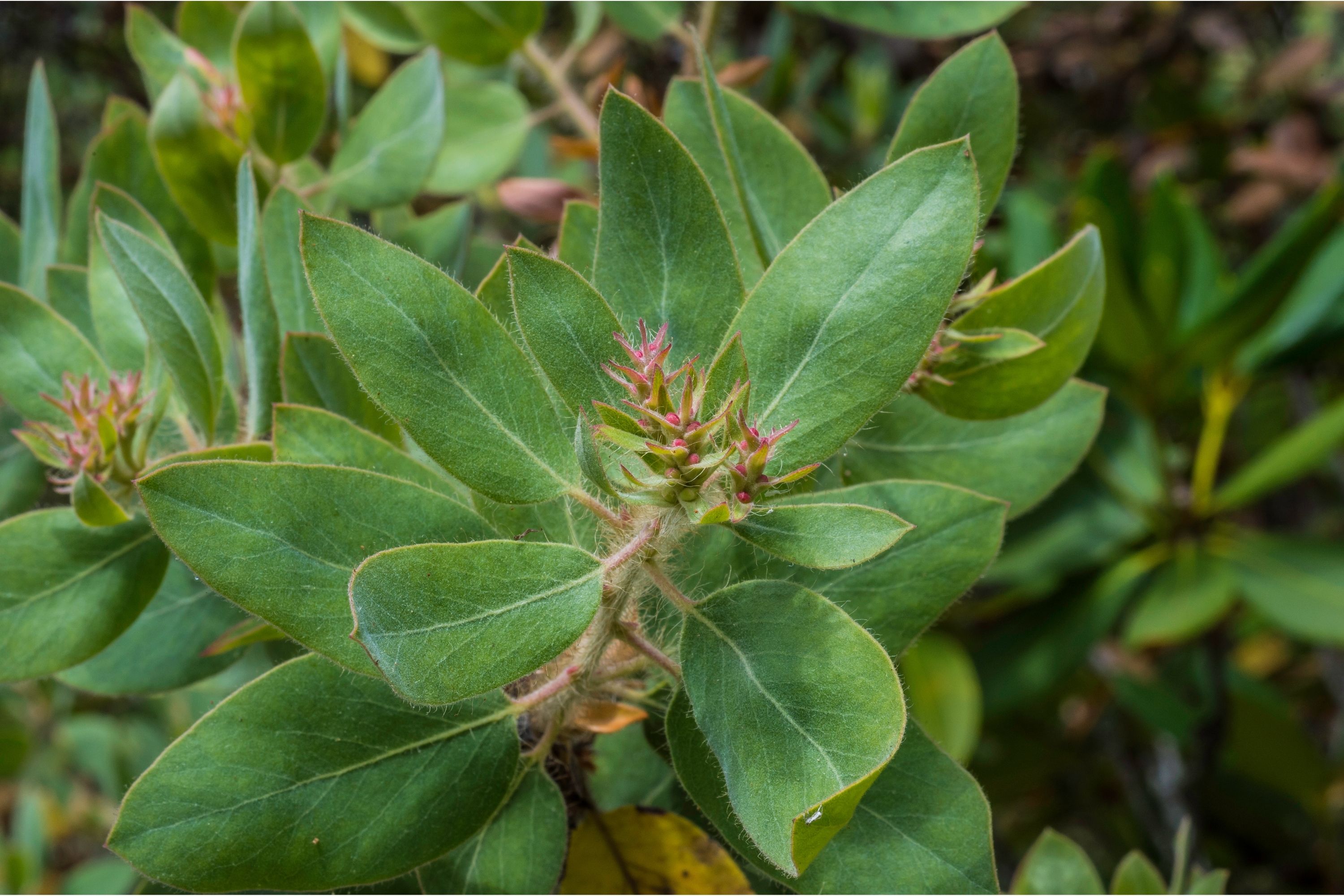Hairy manzanita
(Arctostaphylos columbiana)

Description
Arctostaphylos columbiana is a species of manzanita known by the common name hairy manzanita. It is native to the coast of western North America from northern California to southwestern British Columbia. This large manzanita is a shrub or small tree, usually 1–5 meters tall. It is erect with hairy branches. The leaves are oval-shaped and are usually 2-6 centimeters long and 2-3 wide, pale bluish green, fuzzy on both surfaces, occasionally glandular. The small, white, urn-shaped flowers are borne in bunched inflorescences. The fruit is a red drupe about a centimeter in diameter. The seed requires either fire or consumption by animals in order for germination to occur. This manzanita grows in open, rocky areas. It is sometimes grown as a garden ornamental. Hybrids with Arctostaphylos uva-ursi (named Arctostaphylos x media) commonly occur where the two parent species grow in proximity. Arctostaphylos is a genus of plants comprising the manzanitas and bearberries. They are shrubs or small trees. There are about 60 species, of Arctostaphylos, ranging from ground-hugging arctic, coastal, and mountain species to small trees up to 6 m tall. Most are evergreen (one species deciduous), with small oval leaves 1–7 cm long, arranged spirally on the stems. The flowers are bell-shaped, white or pale pink, and borne in small clusters of 2–20 together; flowering is in the spring. The fruit are small berries, ripening in the summer or autumn. The berries of some species are edible. Arctostaphylos species are used as food plants by the larvae of some Lepidoptera species including Coleophora arctostaphyli (which feeds exclusively on A. uva-ursi) and Coleophora glaucella. Manzanitas, the bulk of Arctostaphylos species, are present in the chaparral biome of western North America, where they occur from southern British Columbia in Canada, Washington to California and New Mexico in the United States, and throughout much of northern and central Mexico. Three species, the bearberries, A. alpina (alpine bearberry), A. rubra (red bearberry) and A. uva-ursi (common bearberry), have adapted to arctic and subarctic climates, and have a circumpolar distribution in northern North America, Asia and Europe. An unusual association of manzanita occurs on Hood Mountain, in Sonoma County, California, where stands of pygmy forest dominated by Mendocino cypress are found.
Taxonomic tree:







